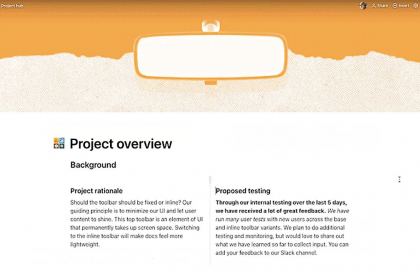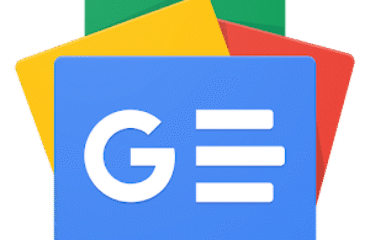
![]() By Matthew Finnegan
By Matthew Finnegan
Senior Reporter, Computerworld |
Microsoft’s Office apps have long been the dominant enterprise productivity tools, with Google Workspace its key rival. But newcomers have emerged in recent years that promise new approaches to document creation.
Two of the well-funded startups leading the charge — Coda and Notion — offer their own takes on modern “all-in-one” workspace apps, combining elements of docs, spreadsheets, databases, wikis and more into a single interactive page that can integrate data from different sources.
The two companies recently announced new features to their respective platforms as they seek to challenge the productivity app incumbents.
“Coda and Notion have developed innovative approaches to collaborative document creation that aim to address the limitations of traditional spreadsheets and word processors — namely, the need to enhance the user experience with intelligent automation and enabling a tighter integration to existing workflows,” said Raúl Castañón, senior analyst at 451 Research, a division of S&P Global Market Intelligence.
“These emerging ‘living documents’ will likely impact the competitive landscape and, for some companies, represent a viable alternative to Google’s or Microsoft’s productivity and collaboration apps.”
Notion, which launched its app in 2016 and has 25 million users, unveiled a host of new features at its Block by Block event this week.
Among them is a new app sidebar that lets users create dedicated spaces for Notion content. These sections can be allocated to specific teams, such as marketing or sales, or cross-functional projects such as a product launch, to organize work more effectively, said Notion in a blog post. Teams can be designated as public or private to ensure the appropriate individuals are able to access sensitive information, and restrictions can be applied to individual pages within a team for more granular control.
The feature will be rolled out gradually from this spring, Notion said.
Notion gets a new teams sidebar that can be used to create dedicated spaces.
New ways to visualize shared data are coming in a few weeks, with the addition of quick filters in the Notion database view that can be saved and recalled at a later point. Users will be able to switch between custom view tabs at the top of a database, and access customization options in a settings panel.
An update to Notion databases, due later this year, will let users sync structured data in the app with external sources, such as Google Calendar, Jira, and GitHub.
Other updates at Notion’s user event on Thursday, include the general availability of the Notion API alongside added API functionality such as enhanced admin controls and documentation. A Notion Certified Program has been launched to help Notion power users expand their expertise with official accreditation as external consultants or internal admins, while a Notion Champions Community provides a place for enthusiasts to connect and share advice as well as interact directly with Notion.
Coda, which launched its app in 2019, announced its 3.0 release last week. The updated software includes an overhauled editor tool, the result of a two-year-long development process, CEO and co-founder, Shishir Mehrotra, said in a blog post.
One facet of the new editor is the ability customize page layouts more easily, using a drag-and-drop interface to rearrange blocks of text as needed. This combines the benefits of two types of editor tools, said Coda — those used for writing and those used by publishers, for example in wikis or website design. “Being able to use the same surface for authoring and publishing opens up a wide set of scenarios,” said Coda, pointing to a portfolio website, team wiki, or dashboard for displaying OKRs and metrics as options.
Another feature of the new editor is the canvas column. This lets users insert a Coda page — with images, tables, and comments — into a spreadsheet row; it can be used for purposes such as writing draft blog posts directly from a content calendar, Coda said.
Coda 3.0’s updated editor tool offers Canvas columns.
The other updates include changes to Coda Packs, which launched in Coda 1.0 to let users create custom automations that interact with third-party apps, such as a button to send emails from a doc with the Gmail Pack.
With the launch of Pack Studio in Coda 3.0, users can build their own Packs in minutes using a browser interface, said Coda, requiring minimal coding knowledge. These can be for use internally across an organization, or shared more widely in the Coda Gallery marketplace, where they can be listed as free to use or paid.
The updates by Coda and Notion align with key requirements for business users identified in 451 Research’s survey data, said Castañón, namely by providing greater connectivity across productivity apps.
The analyst firm’s research highlighted some of the top obstacles affecting team productivity for business. They include: information siloed in different applications (28%), a lack of integration between applications (26%), and difficulties in collaborating effectively across applications (21%).
Other opportunities for productivity improvement cited by respondents include the integration of data from different applications into a workflow (31%), reporting the progress of work against goals (24%), and the creation of documents, spreadsheets, and slides (24%).
These priorities are not lost on Microsoft or Google. Both vendors have been updating their own productivity apps to provide greater flexibility for users. For Google, this led to the smart canvas concept and greater connectivity between apps such as Docs, Sheets, and Slides, as well as its collaboration tools such as Meet and Chat.
Microsoft has been building out its Fluid Framework for some time, culminating in the creation of the Loop app, announced last year and currently in preview, which appears to be a more direct to challenger to newcomers such as Coda and Notion.
While Coda and Notion have proved popular, Castañón doesn’t expect they will displace Microsoft and Google’s apps anytime soon.
“Rather, they are complementary tools intended to address use cases that traditional word processors and spreadsheets were not designed for,” he said, with capabilities for real-time and asynchronous collaboration, integration to systems of record, team project management, and workflow automation.
“More likely, we will see an intermediate stage where they coexist side by side with Microsoft and Google apps, providing some level of integration,” said Castañón.
Related: 3 next-level note-taking apps that’ll change the way you work
Copyright © 2022 IDG Communications, Inc.
Copyright © 2022 IDG Communications, Inc.




